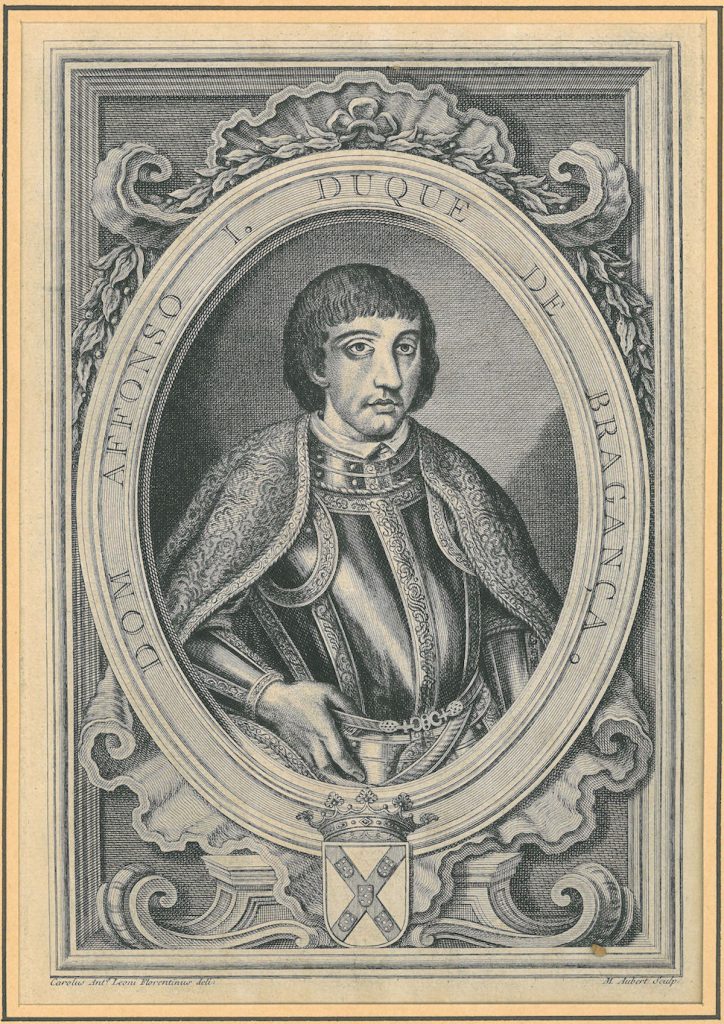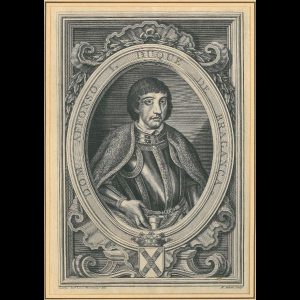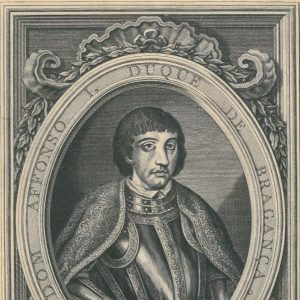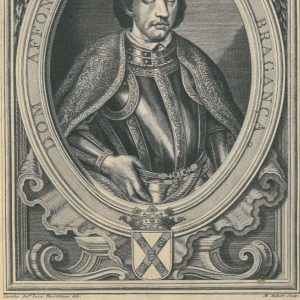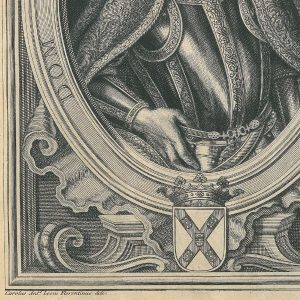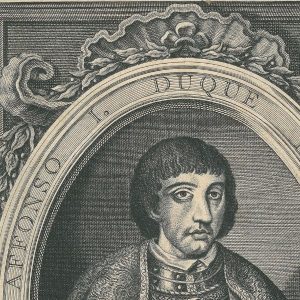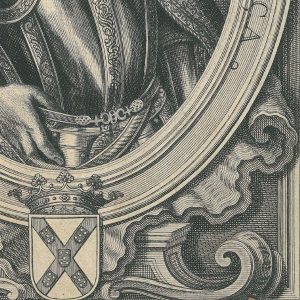Engraving of the 1st Duke of Bragança, D. Afonso
Author: Carolus Leoni
Origin: France
Dating: 18th century
Material: Copper Sheet & Paper
Dimensions (cm): 35 x 61
Inv. no: PD1186
Dom Afonso de Bragança (1377-1461)
This natural son of the King João I, is believed to have been born in the castle of Veiros (Alentejo, Portugal). He married Beatriz Pereira Alvim – daughter of the Constable Nuno Álvares Pereira – and, after her death, he married Constança of Noronha. In 1442, he was granted the title of Duke of Bragança.
Despite being a natural son, Afonso was always supported by his father. Their closeness was so noticeable that, in his first recorded military intervention in Tui (Spain), he was knighted (July 26, 1398).
Throughout his life, Afonso travelled through Europe on diplomatic engagements and by personal initiative. He was in England, Scotland, Spain, France, Italy, among other countries and he also partook in military campaigns in Ceuta. These journeys surely influenced his way of living and of seeing the world and it is probable that it was abroad that Afonso gained a taste for refined works of art and luxurious palaces. This is evident in the construction and reconstruction of several palaces in Chaves, Barcelos and Guimarães.
“He valued scholars and greatly appreciated the memories and ancient things. He had a library, which he filled with various antiquities, many brought when he was outside the kingdom, thus assembling a house of rare things, which today is called a Museum.” (António Caetano Sousa)
He died in Chaves, in December 1461, at around the age of 90.
“Despite all the controversy that this figure in the History of Portugal provoked and continues to provoke, we are undoubtedly facing one of the greatest characters in the national medieval history; probably the most influential man in the History of the 15th century in Portugal.” (Rui Filipe Ferreira Pereira)
This engraving represents him from the waist up, in armor, with mantle and with his right hand on his belt. It is part of a series of engravings of the Dukes of Bragança by Carolus Leoni.
In the past, engravings were inseparable from books. They were the only process that could be repeated in written works. It was one of the most effective global vessels for a visual knowledge of the world and of its protagonists. It was only with the development of photography that engravings began to be relegated to the realm of oblivion, but they continue to be an indispensable source of knowledge from the past.
